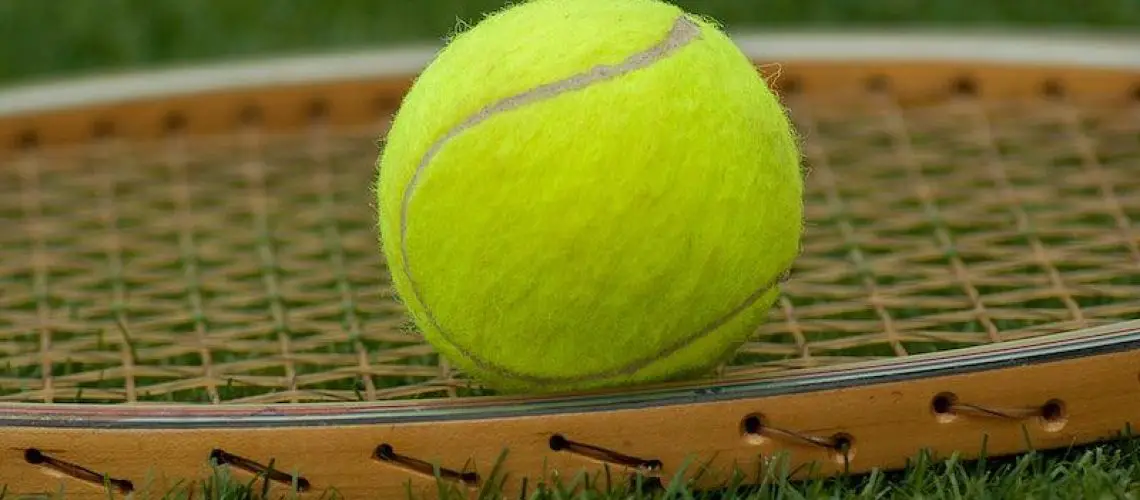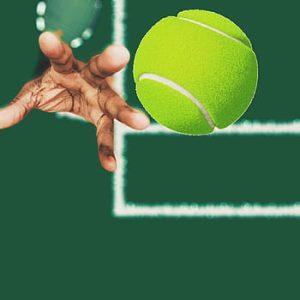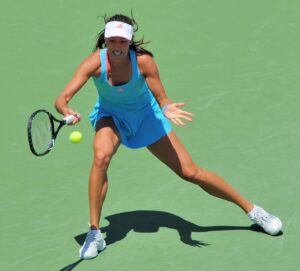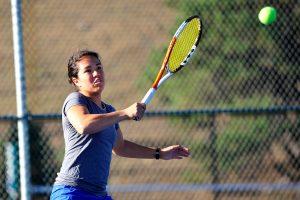We may earn money or products from the companies mentioned in this post.
Introduction to Tennis Training

Tennis training is an essential component in the development of a successful player Whether you’re a beginner or a seasoned pro, investing time and effort into training can greatly enhance your skills and techniques on the court
1 Enhancing Skills and Techniques
Tennis training provides players with the opportunity to refine their skills and improve their techniques Through focused practice sessions, players can work on their stroke mechanics, footwork, and shot selection By consistently honing these fundamental aspects of the game, players can elevate their performance levels and become more proficient in different playing styles
2 Boosting Physical Fitness and Stamina
Tennis is a physically demanding sport that requires strength, speed, agility, and endurance Engaging in regular tennis training helps players build their overall fitness levels and improve their stamina on the court Specific drills and exercises target different muscle groups, enhancing strength, flexibility, and cardiovascular endurance This physical conditioning allows players to sustain high-intensity rallies for longer periods without experiencing fatigue
3 Mental Preparation and Focus Development
Mental preparation plays a crucial role in tennis success Training not only strengthens the body but also cultivates mental resilience and focus necessary for competitive play Through strategic drills and match simulations, players learn how to stay calm under pressure, maintain concentration during long matches, make split-second decisions effectively, and develop strategies to outsmart opponents
Goals of an Effective Tennis Training Program

Improved Overall Performance on the Court
An effective tennis training program aims to enhance overall performance on the court by targeting specific areas such as technique refinement, tactical understanding of the game, physical fitness improvements,and mental preparedness
Reduced Risk of Injuries
Injuries are a common occurrence in tennis due to the rigorous nature of the sport An effective training program incorporates injury prevention exercises and techniques, helping players build resilience and reduce the risk of injuries Strengthening key muscle groups, improving flexibility, and practicing proper movement patterns can all contribute to minimizing the chances of sustaining injuries
Longevity in the Sport
A well-structured and consistent training regimen can help ensure longevity in the sport By focusing on proper technique, physical fitness, and mental preparation, players can minimize the risk of burnout or overuse injuries Additionally, maintaining a balanced approach to training allows players to sustain their passion for tennis and continue playing at a high level for years to come
Physical conditioning plays a crucial role in the success of tennis players To excel on the court, athletes must develop strength and power in their bodies This involves incorporating upper body exercises such as push-ups, pull-ups, dumbbell rows, and shoulder presses into their training routines These exercises target key muscles like the chest, back, shoulders, and arms, enabling players to generate more force during strokes and maintain stability throughout their movements
In addition to upper body exercises, lower body strength is equally important for tennis players Squats, lunges, calf raises, and leg curls are effective exercises that help strengthen the legs and improve overall stability Strong lower body muscles provide a solid foundation for powerful shots and quick changes in direction on the court
Building endurance and cardiovascular fitness is another essential component of physical conditioning for tennis players Aerobic workouts like running, swimming, and cycling are great options for improving cardiovascular health Within these aerobic workouts lies the opportunity to incorporate interval training—a technique that alternates between high-intensity bursts of exercise with periods of rest or lower intensity activity By practicing interval training regularly, tennis players can enhance their speed and endurance levels on the court
Long distance running also plays a vital role in maintaining stamina during matches It helps athletes develop an increased capacity to sustain physical exertion over extended periods Regular long distance running sessions contribute to better overall endurance during long matches or intense practice sessions
Flexibility and mobility enhancement are crucial for tennis players as they require swift movements around the court with ease Dynamic stretching before workout sessions helps warm up muscles by moving them through a full range of motion while preparing them for upcoming physical activity Static stretching after workouts helps improve flexibility by holding stretches for longer durations
To further enhance flexibility and promote relaxation after intense training sessions or matches, many tennis players incorporate activities like yoga or Pilates into their routines These practices focus on stretching tight muscle groups while improving balance and core strength Yoga and Pilates not only increase overall flexibility but also contribute to mental focus and relaxation, crucial elements for a successful performance on the tennis court
By incorporating strength and power training, endurance and cardiovascular exercises, as well as flexibility and mobility enhancement into their physical conditioning routines, tennis players can improve their overall performance on the court These components together create a well-rounded athlete capable of delivering powerful shots, enduring long matches, and moving swiftly with agility
Tennis Techniques Development

When it comes to mastering the game of tennis, developing strong groundstrokes is essential This includes both the forehand and backhand shots One crucial aspect of improving these strokes is selecting the proper grip Whether it’s an Eastern grip or a Western grip, finding the right one can greatly enhance your control and power on the court
In addition to grip selection, footwork drills play a vital role in positioning yourself for optimal shot execution By practicing various footwork exercises, you can improve your agility and ability to reach difficult shots These drills focus on quick movements and change of direction, allowing you to cover more ground efficiently
Of course, mastering groundstrokes also requires honing your swing mechanics The way you swing your racket greatly impacts both the power and accuracy of your shots By focusing on proper technique and getting feedback from coaches or experienced players, you can refine your swing mechanics and take your groundstrokes to new heights
Volleys: Forehand and Backhand Volley Technique
The volley is an important skill in tennis that involves hitting the ball before it bounces on the court surface To excel at volleys, understanding proper net approach strategy is key This includes knowing when to move forward towards the net during rallies and how to position yourself for successful volleys
In addition to strategy, timing plays a crucial role in executing effective volleys Timing drills can help improve your reaction time when dealing with fast-paced shots at close range By practicing these drills regularly, you can sharpen your reflexes and make split-second decisions on where to direct your volley
Serve Technique Improvement
The serve is arguably one of the most critical aspects of tennis as it initiates each point To improve serve technique, it’s important to focus on the service motion By incorporating specific drills into your training routine, you can develop consistency in your serves This involves working on body positioning, arm extension, and follow-through
Another area of serve technique improvement is toss placement The toss sets the foundation for a successful serve, and practicing toss placement can greatly enhance your accuracy By mastering precise toss positioning, you can consistently hit powerful and well-placed serves that keep your opponents on their toes
To become a well-rounded tennis player, it’s crucial to invest time in developing these key techniques From mastering groundstrokes with proper grip selection and swing mechanics to refining volley technique through net approach strategy and timing drills, and finally improving serve technique with focused motion drills and toss placement practice – each aspect contributes to a more formidable game on the court
Mental Preparation for Tennis Success

Establishing a pre-match routine
In order to set yourself up for success on the tennis court, it’s crucial to establish a pre-match routine that helps you get in the right mindset One effective technique is visualization, where you imagine yourself achieving successful outcomes during the match By picturing yourself hitting powerful serves or executing flawless shots, you can build confidence and improve your focus
Additionally, visualization can help you overcome adverse situations that may arise during a match By mentally rehearsing how you would handle challenging moments like being down in a game or facing a tough opponent, you can prepare yourself to stay calm and make strategic decisions
Self-talk strategies during matches
The way we talk to ourselves during matches can have a significant impact on our performance Positive self-encouragement is key in boosting confidence and maintaining motivation on the court Remind yourself of your strengths and past successes to reinforce a positive mindset
However, negative thoughts or emotions may still creep in during intense moments It’s important to develop strategies for managing these thoughts effectively Whether it’s through deep breathing exercises or using specific phrases to reframe negative thinking, finding ways to redirect your focus back to the present moment can help prevent them from derailing your performance
Setting SMART goals for tennis improvement
To continuously improve your tennis skills, setting SMART goals is essential These goals should be Specific, Measurable, Achievable, Relevant, and Time-bound Instead of setting vague objectives like “improve my serve,” try setting specific targets such as “increase my first serve percentage by 10% within three months”
Regularly assessing your progress and adjusting your strategies accordingly is also crucial in achieving these goals Keep track of your performance, identify areas for improvement, and make necessary adjustments to your training routine or game plan This constant evaluation and adaptation will allow you to stay on track towards reaching your tennis goals
Conclusion: The Path to Tennis Mastery

As we reach the conclusion of this journey towards tennis mastery, it is crucial to reiterate the fundamental role that training plays in achieving success on the court Without a doubt, training forms the bedrock upon which all other aspects of tennis greatness are built It is through consistent and dedicated practice that players refine their skills, hone their technique, and develop the mental fortitude required to excel
The Importance of Training
Training serves as the catalyst for improvement in every facet of a tennis player’s game Whether it be mastering powerful serves, precise volleys, or lightning-fast footwork, regular training sessions provide ample opportunities for growth and refinement Through deliberate practice under expert guidance, players can identify weaknesses and work towards eliminating them while capitalizing on their strengths
A well-rounded training plan not only focuses on technical skills but also encompasses physical conditioning and mental preparation By incorporating strength and agility exercises into their routine, players enhance their physical capabilities, enabling them to endure long matches with sustained intensity Moreover, developing mental resilience through visualization techniques and mindfulness practices equips players with the ability to stay focused during high-pressure situations
Committing to a Well-Rounded Training Plan
Achieving mastery in any field requires dedication and commitment The path to tennis greatness is no different To maximize potential and progress towards becoming an accomplished player, it is essential to commit wholeheartedly to a well-rounded training plan
This entails setting specific goals and designing a structured schedule that includes regular practice sessions for technical skill development as well as physical conditioning drills Additionally, seeking guidance from experienced coaches who can provide personalized feedback and tailor training programs according to individual strengths and weaknesses can greatly accelerate progress
Furthermore, embracing a growth mindset – one that sees challenges as opportunities for growth rather than obstacles – is crucial Tennis mastery is a journey of continuous learning and improvement, and maintaining a positive attitude towards setbacks and failures is essential It is through perseverance and the willingness to learn from mistakes that players can ultimately reach their full potential
In conclusion, the path to tennis mastery requires unwavering dedication to training, encompassing technical skills, physical conditioning, and mental preparation By committing to a well-rounded training plan and embracing a growth mindset, aspiring players can navigate this path with determination and resilience So lace up your shoes, grab your racket, and embark on this exhilarating journey towards tennis greatness!
Useful Links

Tennis Training
Quick At Home Bodyweight Workout for Tennis Players
Wimbledon workouts: Exercises to improve your tennis game
Guide to Tennis Drills: 6 Types of Practice Exercises – 2023
Running Training for Tennis Players
Tennis Workouts & Fitness Training
Tennis Fitness Training For The Competitive Senior Players
Training | Health and Fitness | Learn
6-Step Agility Training for Tennis Players
Why Tennis Players Should Lift Weights (Plus Two Free …
How to train like a professional tennis player – 9Coach – Nine
FITNESS TRAINING
Tennis Fitness Circuit Workouts and Exercises to Improve …
Strength Training for Tennis Players (Detailed Program)
Developing Effective Training Routines In Tennis Players
Tennis Workouts Are Perfect for a Balanced, Toned Physique
5 Ways You Could Get The Body Of A Tennis Player
How To Build Endurance For Tennis
Cross Training | Jump Rope | Stair Climb | Stretching
10 Ways to Practise Tennis at Home • TennisAvid






